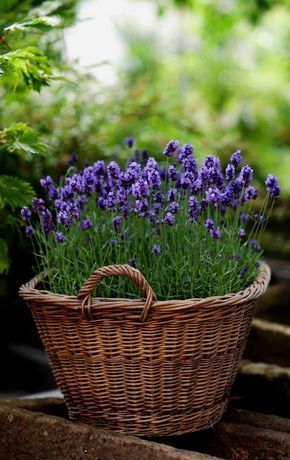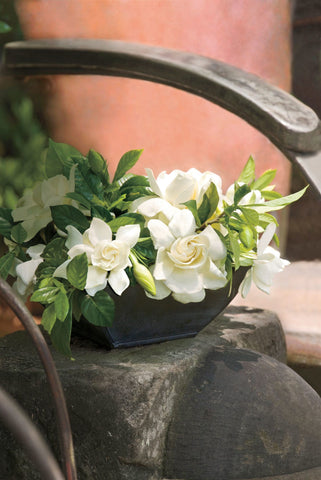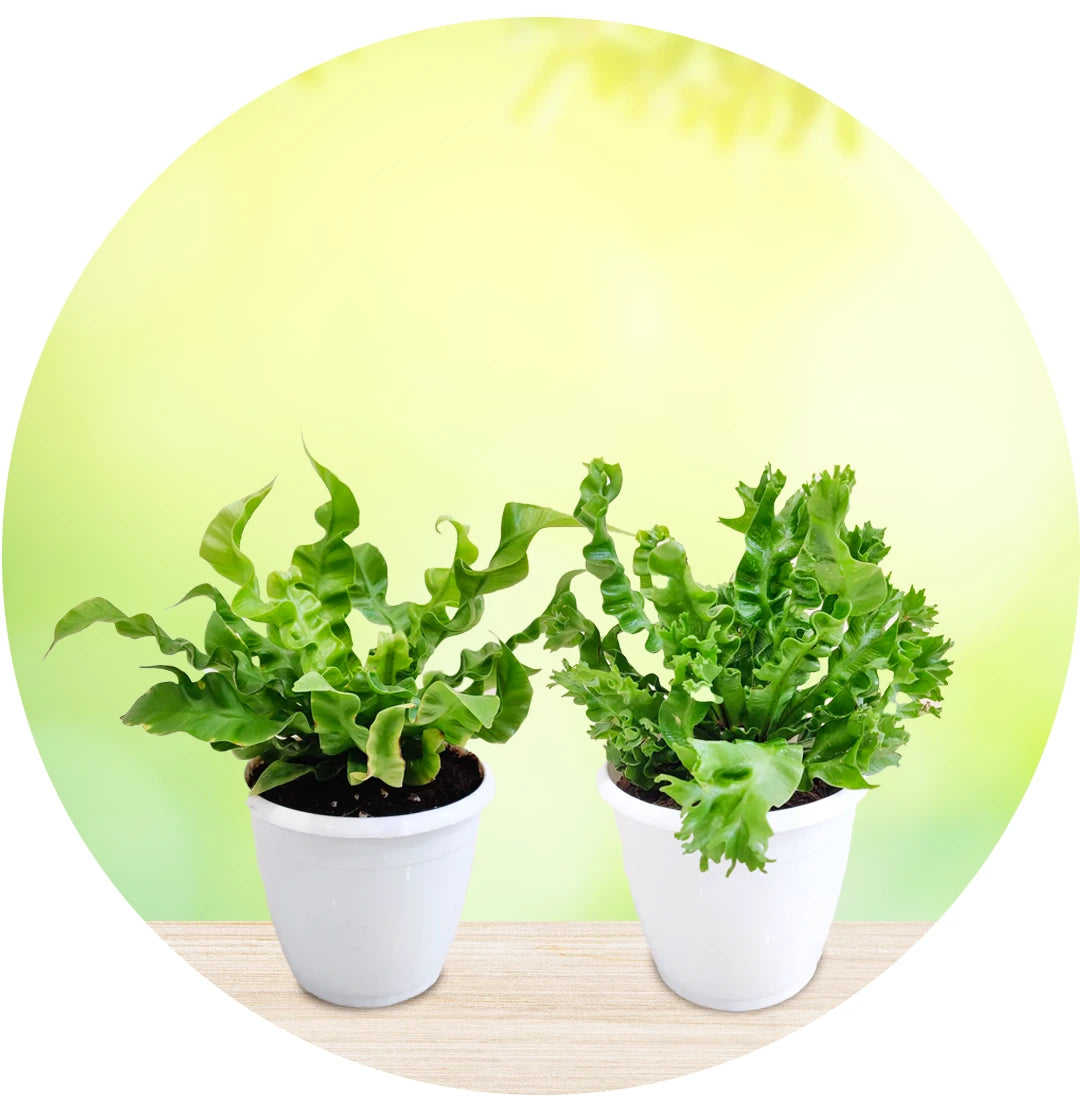
A Fragrant Garden: Top 10 Flowers to Plant for a Sweet-Smelling Oasis
Spring is the perfect time to embrace the beauty and fragrance in your backyard. Imagine stepping out into a lush garden filled with vibrant colours and intoxicating scents! With the right selection of flowers, you can create a sweet-smelling oasis that will delight your senses and uplift your mood all season long!
But with so many flowers to choose from, it can be overwhelming to know where to start. That's why we've put together a list of the top 10 flowers to plant for a fragrant spring garden.

So, whether you're a seasoned gardener or just starting, grab your gloves and get ready to dig in. Let's explore the world of sweet-smelling flowers and create a springtime sanctuary that will fill your heart with joy!
Rose
Every plant enthusiast would have had at least one rose plant in their garden, and that's why this plant is the first on our list.

When it comes to creating a fragrant spring garden, roses are a classic choice that never goes out of style. Known for their sweet and heady aroma, these beautiful flowers add a touch of romance and elegance to any outdoor space.
Plant Needs:
- Sun Exposure: Roses prefer full sun to partial shade, but they can tolerate slight indirect or direct shade as well.
- Soil Conditions: Loose, well-draining soil is essential for roses. They thrive in a sandy potting mix that allows water to drain freely.
- Watering: Roses require regular watering, but it's important not to overwater them. Allow the soil to dry out slightly between waterings.
- Fertilisation: Roses benefit from regular fertilisation, especially during the growing season. Use a balanced fertiliser that contains equal parts nitrogen, phosphorus, and potassium.
- Pruning: Pruning is an important part of rose care, as it helps promote healthy growth and flowering. Prune your roses in the late winter or early spring, before new growth begins.
- Pest and Disease Control: Roses are susceptible to a variety of pests and diseases, including aphids, spider mites, black spots, and powdery mildew. Regular monitoring and treatment can help to prevent and control these issues.
Overall, we love this romantic beauty, so get started with a classic but never-so-basic rose!
Jasmine
We are sure you've seen these fragrant little white flowers almost everywhere in India. It is well known for its intoxicating, alluring scent that is used in perfumes, essential oils, and sometimes even teas!

Plant Needs:
- Sun Exposure: Jasmine plants prefer full sun to partial shade, but they can also tolerate indirect light. In areas with hot summers, it's best to provide some afternoon shade to prevent the plant from getting stressed.
- Soil Conditions: Jasmine plants thrive in loose, well-draining soil. A sandy potting mix with good drainage is ideal. They prefer slightly acidic soil with a pH of 6.0–7.0.
- Watering: Jasmine plants require regular watering, especially during the growing season. Keep the soil consistently moist but not waterlogged.
- Fertilisation: Jasmine plants benefit from regular fertilisation during the growing season. Use a balanced fertiliser every 4-6 weeks to promote healthy growth and flowering.
- Pruning: Pruning is important for jasmine plants to keep them healthy and promote bushy growth. Prune the plant in the spring after flowering to remove any dead or damaged wood and shape the plant as desired.
- Pest and Disease Control: Jasmine plants are generally resistant to pests and diseases, but they can be susceptible to spider mites, scale insects, and whiteflies. Regular monitoring and treatment can help to prevent and control these issues.

A well-known flowering plant that captures anyone's attention with its calming and inviting scent. Your garden needs at least one variety of jasmine. And, yes, there are hundreds of varieties of this plant!
Lavender
Lavender is from the herb family and is one of the most fascinating scented plants to have in your garden. This versatile plant produces lovely purple blooms and emits a calming scent that is known to reduce stress and anxiety. Lavender is a popular choice for herb gardens and is also great for adding colour and fragrance.
Plant Needs:
- Sun Exposure: Lavender plants require full sun exposure to thrive, ideally for 6–8 hours per day. They can tolerate some shade but may produce fewer flowers.
- Soil Conditions: Lavender plants prefer well-draining soil that is slightly alkaline with a pH between 6.5 and 7.5. They can tolerate sandy, loamy, or rocky soil as long as it's well-draining.
- Watering: Lavender plants are drought-tolerant and require little watering once established. Water deeply but infrequently, allowing the soil to dry out between waterings.
- Fertilisation: Lavender plants don't require much fertiliser and can actually be harmed by over-fertilisation. If you fertilise, use a balanced fertiliser sparingly in the spring or fall.
- Pruning: Pruning is important for lavender plants to promote healthy growth. Prune the plant in the spring or fall after flowering to remove any dead or damaged wood and shape the plant as desired.
- Pest and Disease Control: Lavender plants are generally resistant to pests and diseases. They can be susceptible to root rot if the soil is too wet, so it's important to ensure proper drainage.

Such a multi-tasking plant, lavender can also be used for a variety of purposes, including as a culinary herb, a natural insect repellent, and as a fragrance for soaps, candles, and other household products.
Garden Phlox
Garden phlox, also known as Phlox paniculata, is a beautiful and easy-to-grow perennial that produces stunning clusters of fragrant flowers in shades of pink, purple, white, and red.

Plant Needs:
- Sun Exposure: Garden phlox requires full sun to partial shade, ideally 6 hours of direct sunlight per day.
- Soil Conditions: The plant thrives in fertile, moist soil with good drainage.
- Watering: It needs regular watering, especially during periods of drought.
- Fertilisation: The plant benefits from regular fertilisation during the growing season.
- Pruning: To promote healthy growth and prevent the plant from becoming too leggy, Garden Phlox benefits from pruning. Additionally, remove any dead or diseased stems throughout the growing season to maintain the plant's health and appearance.
- Pest and Disease Control: Garden phlox can be susceptible to a few pests and diseases, including powdery mildew, spider mites, and aphids. To prevent powdery mildew, avoid watering the leaves of the plant and provide good air circulation. If you notice signs of infestation, treat the plant with insecticidal soap or neem oil.
![]()
Best grown outdoors, tall phlox is a stunningly colourful and fragrant plant that every spring garden needs!
Gardenia
A showy, sweet, and citrusy-smelling flower is the gardenia, which is popularly grown indoors and outdoors for its lush, cream-coloured blossoms that are large, waxy flowers with a pleasant and heady scent that can fill a garden or home with fragrance.

Plant Needs:
- Sun Exposure: Gardenia plants prefer partial shade with some direct sunlight in the morning or late afternoon.
- Soil Conditions: They require well-draining, acidic soil that is rich in organic matter. A pH of 5.0–6.5 is ideal for gardenias.
- Watering: Regular watering is crucial for Gardenia plants, as they require consistently moist soil. However, avoid overwatering, as this can lead to root rot.
- Fertilization: Gardenias benefit from regular fertilization during the growing season, using a fertilizer specifically formulated for acid-loving plants.
- Pruning: Gardenias require minimal pruning, but they can benefit from light pruning in the spring to promote new growth and maintain the plant's shape.
- Pest and Disease Control: Gardenias can be susceptible to pests such as mealybugs, whiteflies, and scale insects. To prevent infestations, regularly inspect your plant for signs of pests and take preventative measures such as spraying with insecticidal soap or neem oil.

Gardenias are beautiful and versatile plants that can add both beauty and fragrance to any garden or home.
Tuberose
If you're looking for sweet, floral-scented flowers for your garden, tuberose is the ideal option for you. This plant blooms in beautiful cream and white flowers that give off a pleasant fragrance to spruce up your garden!

Plant Needs:
- Sun Exposure: Tuberose plants prefer full sun to partial shade, with at least 6 hours of direct sunlight per day.
- Soil Conditions: They require well-draining, fertile soil that is rich in organic matter. A pH of 6.0–7.5 is ideal for tubercles.
- Watering: Tuberose plants require regular watering, especially during the growing season, to maintain moist soil. However, they do not tolerate overwatering or waterlogged soil, as this can lead to root rot.
- Fertilization: Tuberose plants benefit from regular fertilization with a balanced fertilizer during the growing season.
- Pruning: Tuberose plants require minimal pruning, but they can benefit from deadheading spent blooms to encourage more flowers.
- Pest and Disease Control: Tuberose plants can be susceptible to pests such as spider mites and aphids, as well as diseases such as fungal leaf spot and root rot.

Tuberose is typically grown as an ornamental plant in gardens and is prized for its beautiful and fragrant flowers.
Sweetpea
A climbing flower in vibrant hues, the sweetpea is an ornamental plant that produces intense fragrance in and around your garden. It yields delicate, fragrant flowers in shades of pink, purple, red, white, and bi-colours. The flowers are often two-toned, with a darker standard and a lighter wing.

Plant Needs:
- Sun Exposure: Sweet pea plants prefer full sun to partial shade, with at least 6 hours of direct sunlight per day.
- Soil Conditions: They require well-draining, fertile soil that is rich in organic matter. A pH of 6.0–7.5 is ideal for sweet peas.
- Watering: Sweet pea plants require regular watering, especially during the growing season, to maintain moist soil. However, they do not tolerate overwatering or waterlogged soil, as this can lead to root rot.
- Fertilisation: Sweet pea plants benefit from regular fertilisation with a balanced fertiliser during the growing season.
- Pruning: Sweet pea plants require minimal pruning, but they can benefit from deadheading spent blooms to encourage more flowers.
- Pest and Disease Control: Sweet pea plants can be susceptible to pests such as aphids and spider mites, as well as diseases such as powdery mildew and root rot.

Sweetpeas are a beautiful and fragrant addition to any garden or home, offering an abundance of colorful blooms and a sweet scent that is sure to delight.
Daphne
An elegant plant that delivers colourful blossoms in clusters. These plants are known for their fragrant, tubular flowers that are typically pink, white, or purple. Some species also produce red berries after the flowers fade.

Plant Needs:
- Sun Exposure: Daphne plants prefer partial shade to full sun, with some protection from the hot afternoon sun in warmer climates.
- Soil Conditions: They require well-draining soil that is rich in organic matter. A pH of 6.0–7.5 is ideal for Daphne.
- Watering: Daphne plants require regular watering, especially during the growing season, to maintain moist soil. However, they do not tolerate overwatering or waterlogged soil, as this can lead to root rot.
- Fertilization: Daphne plants do not require heavy fertilization, but they can benefit from a balanced fertilizer applied in the spring.
- Pruning: Daphne plants require minimal pruning, but they can benefit from light pruning after flowering to maintain their shape.
- Pest and Disease Control: Daphne plants can be susceptible to pests such as scale insects and spider mites, as well as diseases such as powdery mildew and root decay.

Daphne shrubs are popular among gardeners and landscapers for their beautiful and fragrant flowers, making them a great addition to any garden or landscape design.
Plumeria
Plumeria, also commonly known as frangipani, is a tropical flowering plant. It produces beautiful, fragrant flowers in shades of pink, yellow, white, and red with a distinct five-petal shape.

Plant Needs:
- Sun Exposure: Plumeria plants require full sun to thrive and produce abundant flowers. They require at least 6 hours of direct sunlight per day.
- Soil Conditions: They require well-draining soil that is rich in organic matter. A pH of 6.0–7.0 is ideal for plumeria.
- Watering: Plumeria plants require regular watering, especially during the growing season, to maintain moist soil. However, they do not tolerate overwatering or waterlogged soil, as this can lead to root rot.
- Fertilisation: Plumeria plants require regular fertilisation with a balanced fertiliser during the growing season. A high-phosphorus fertiliser can encourage blooming.
- Pruning: Plumeria plants benefit from regular pruning to maintain their shape and encourage branching. Pruning is best done in the late winter or early spring, before new growth appears.
- Pest and Disease Control: Plumeria plants can be susceptible to pests such as mealybugs and spider mites, as well as diseases such as leaf spot and stem rot.

Plumeria is a beautiful and fragrant plant that can add tropical flair to any garden.
Cestrum
A sweet-smelling plant that blooms at night is Cestrum, also known as night-blooming jasmine. They are known for their tubular, fragrant flowers that bloom at night and are typically white or yellow in colour.

Plant Needs:
- Sun Exposure: Cestrum plants require full to partial sun to thrive and produce abundant flowers. They require at least 4-6 hours of direct sunlight per day.
- Soil Conditions: They prefer well-draining soil that is rich in organic matter. A pH of 6.0–7.0 is ideal for cestarum.
- Watering: Cestrum plants require regular watering, especially during the growing season, to maintain moist soil. However, they do not tolerate overwatering or waterlogged soil, as this can lead to root rot.
- Fertilisation: Cestrae plants benefit from regular fertilisation with a balanced fertiliser during the growing season. A high-phosphorus fertiliser can encourage blooming.
- Pruning: Cestrum plants benefit from regular pruning to maintain their shape and encourage branching. Pruning is best done in the late winter or early spring, before new growth appears.
- Pest and Disease Control: Cestrum plants can be susceptible to pests such as whiteflies, spider mites, and mealybugs, as well as diseases such as powdery mildew and leaf spot.
A tropical flowering plant that is perfect for any spring garden!
Thats it for today; go ahead and start creating the spring garden of your dreams with these sweet-smelling flowers!











Leave a comment